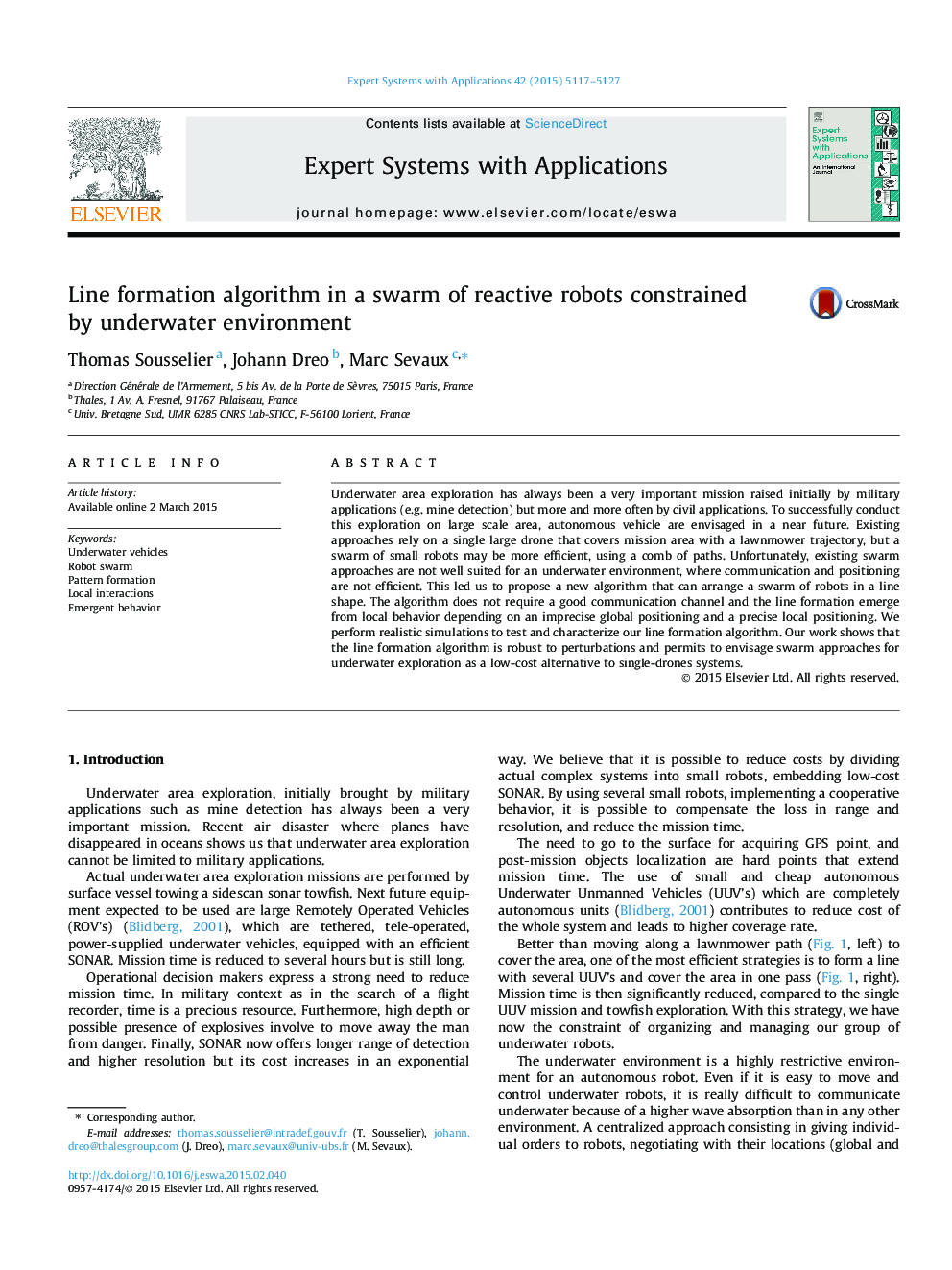| کد مقاله | کد نشریه | سال انتشار | مقاله انگلیسی | نسخه تمام متن |
|---|---|---|---|---|
| 382117 | 660737 | 2015 | 11 صفحه PDF | دانلود رایگان |
• Underwater exploration is usually done with a single SONAR wired robot.
• We demonstrate that we can replace it by a swarm of small autonomous UUV’s.
• The goal of the main algorithm is to form a line of robot in the swarm.
• There is no communication between robots, they are fully autonomous.
• The line formation algorithm is robust and resists to various perturbations.
Underwater area exploration has always been a very important mission raised initially by military applications (e.g. mine detection) but more and more often by civil applications. To successfully conduct this exploration on large scale area, autonomous vehicle are envisaged in a near future. Existing approaches rely on a single large drone that covers mission area with a lawnmower trajectory, but a swarm of small robots may be more efficient, using a comb of paths. Unfortunately, existing swarm approaches are not well suited for an underwater environment, where communication and positioning are not efficient. This led us to propose a new algorithm that can arrange a swarm of robots in a line shape. The algorithm does not require a good communication channel and the line formation emerge from local behavior depending on an imprecise global positioning and a precise local positioning. We perform realistic simulations to test and characterize our line formation algorithm. Our work shows that the line formation algorithm is robust to perturbations and permits to envisage swarm approaches for underwater exploration as a low-cost alternative to single-drones systems.
Journal: Expert Systems with Applications - Volume 42, Issue 12, 15 July 2015, Pages 5117–5127
